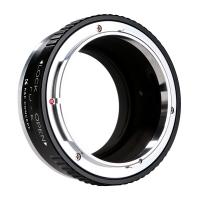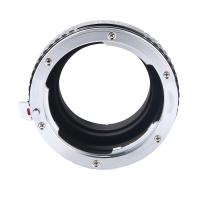What Does Asbestos Look Like Under A Microscope?
Under a microscope, asbestos appears as thin, needle-like fibers that are often bundled together. The fibers are typically long and thin, with a diameter of less than 1 micron. Asbestos fibers can be either straight or curved, and they may have a smooth or rough surface. The color of asbestos fibers can vary depending on the type of asbestos, but they are typically white, gray, or brown. When viewed under polarized light, asbestos fibers may exhibit a distinctive "beaded" appearance due to their crystalline structure. It is important to note that asbestos fibers are extremely hazardous when inhaled, as they can cause serious lung diseases such as mesothelioma and asbestosis. As a result, proper precautions should be taken when handling asbestos-containing materials, and individuals should avoid exposure to asbestos fibers whenever possible.
1、 Fibrous morphology of asbestos minerals
Asbestos is a group of naturally occurring minerals that have been widely used in construction and manufacturing due to their heat-resistant properties. However, exposure to asbestos fibers has been linked to serious health problems, including lung cancer and mesothelioma.
Under a microscope, asbestos fibers have a distinctive fibrous morphology. They are long, thin, and needle-like, with a diameter of less than 3 micrometers. Asbestos fibers can be divided into two main categories: serpentine and amphibole.
Serpentine asbestos fibers have a curly or wavy shape, resembling a coiled snake. The most common type of serpentine asbestos is chrysotile, which accounts for about 95% of all asbestos used in the United States. Chrysotile fibers are flexible and can be easily woven into fabrics or mixed with other materials.
Amphibole asbestos fibers, on the other hand, have a straight, needle-like shape. There are several types of amphibole asbestos, including amosite, crocidolite, and tremolite. These fibers are more brittle than chrysotile and are often used in insulation and other high-temperature applications.
Recent studies have shown that even low levels of asbestos exposure can increase the risk of lung cancer and mesothelioma. As a result, many countries have banned the use of asbestos in construction and manufacturing. However, asbestos-containing materials are still present in many older buildings and can pose a health risk if they are disturbed or damaged.

2、 Chrysotile asbestos under polarized light
Chrysotile asbestos is a type of asbestos that is commonly found in building materials such as insulation, roofing, and flooring. Under a microscope, chrysotile asbestos appears as long, thin, and flexible fibers that are white or gray in color. These fibers are typically between 0.5 and 20 micrometers in diameter and can be up to several centimeters in length.
When viewed under polarized light, chrysotile asbestos fibers exhibit a distinctive pattern of light and dark bands known as a "beaded" or "serpentine" pattern. This pattern is caused by the way that light interacts with the fibers' crystalline structure, which is composed of layers of magnesium and silica.
While chrysotile asbestos has been widely used in construction materials for many years, it is now recognized as a serious health hazard. Exposure to asbestos fibers can cause a range of respiratory diseases, including lung cancer, mesothelioma, and asbestosis. As a result, many countries have banned the use of asbestos in new construction projects, and efforts are underway to remove existing asbestos-containing materials from buildings.
In recent years, there has been growing concern about the potential health risks associated with exposure to even small amounts of asbestos fibers. Some studies have suggested that even brief exposure to asbestos fibers can increase the risk of developing mesothelioma and other asbestos-related diseases. As a result, many experts are calling for more stringent regulations on the use and handling of asbestos-containing materials.

3、 Amphibole asbestos under scanning electron microscope
Asbestos is a naturally occurring mineral that has been widely used in construction and manufacturing due to its heat-resistant properties. However, it has been linked to serious health problems, including lung cancer and mesothelioma. Asbestos fibers are microscopic and can be difficult to identify without the use of specialized equipment.
Under a scanning electron microscope, amphibole asbestos appears as thin, needle-like fibers that are typically less than 1 micrometer in diameter and several micrometers in length. These fibers are often arranged in bundles and can be difficult to distinguish from other types of fibers, such as those found in dust or clothing.
Recent research has shown that the toxicity of asbestos fibers is related to their size and shape. Smaller fibers are more easily inhaled and can penetrate deeper into the lungs, where they can cause damage to the respiratory system. Additionally, some types of asbestos, such as amphibole asbestos, are more hazardous than others due to their longer, sharper fibers.
In conclusion, asbestos fibers are difficult to identify without the use of specialized equipment, but under a scanning electron microscope, amphibole asbestos appears as thin, needle-like fibers that are typically less than 1 micrometer in diameter and several micrometers in length. The toxicity of asbestos fibers is related to their size and shape, with smaller and sharper fibers being more hazardous.

4、 Identification of asbestos using transmission electron microscopy
What does asbestos look like under a microscope? Asbestos is a naturally occurring mineral that has been widely used in construction and manufacturing due to its heat-resistant properties. When viewed under a microscope, asbestos fibers appear as thin, needle-like structures with a length-to-width ratio of at least 3:1. The fibers are typically colorless and transparent, making them difficult to detect with the naked eye.
Identification of asbestos using transmission electron microscopy (TEM) is the most reliable method for determining the presence of asbestos fibers in a sample. TEM allows for the visualization of individual fibers at high magnification, enabling accurate identification of asbestos fibers and differentiation from other mineral fibers.
Recent studies have shown that asbestos fibers can cause a range of health problems, including lung cancer, mesothelioma, and asbestosis. As a result, many countries have banned the use of asbestos in construction and manufacturing. However, asbestos-containing materials are still present in many older buildings and products, posing a risk to workers and the general public.
In conclusion, asbestos fibers are thin, needle-like structures that are difficult to detect with the naked eye. Identification of asbestos using TEM is the most reliable method for determining the presence of asbestos fibers in a sample. Asbestos exposure can cause serious health problems, and it is important to take precautions when working with or around asbestos-containing materials.






































